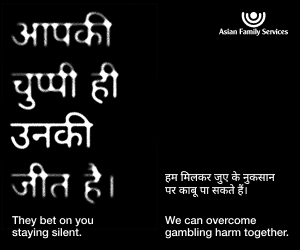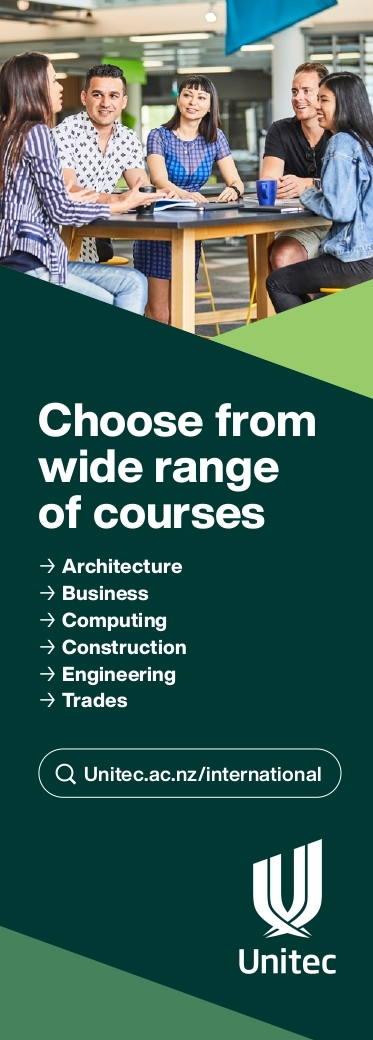Exclusive: OIA reveals INZ Mumbai office pushed for new instructions, in middle of partnership visa delays

Documents obtained under Official Information Act reveal that Immigration New Zealand’s Mumbai branch was pushing for “changes in resources such as Visa Pak instructions in the partnership-space” in the middle of the crisis of unprecedented visa delays.
In the year 2019 INZ faced unprecedented delays in visa processing that caused much stress and anxiety to thousands of Kiwi-families, largely because of inaccurate forecasting, a troubled restructuring process and poor staffing issues.
The visa processing queue had started to pile up with inordinate delays since November 2018, and by mid of 2019, several media reports had started reporting Immigration Minister Iain Lees-Galloway’s displeasure at the delays.
An NZ Herald story reported in May 2019, INZ had a pending queue of about 10, 702 applications, with around 9897 still unallocated to case officers.
RNZ reported in July 2019 that the number of pending applications rose to a whopping 12,000, with an average of 6-7 month of wait before being allocated to a case officer.
Did INZ Mumbai’s respond by changing operational practice on partnership visa?
INZ had been taking many operational decisions to address the delays and expedite the visa-processing by that time including hiring new staff, shifting the processing of partnership visa applications to Hamilton, and moving the processing of offshore student visa applications of all markets except Vietnam and India to Palmerston North.
However, notably, INZ Mumbai office was also pushing for changing the operational practice on partnership visa, which would – as it panned out later – put the Indian marriages in disadvantage.
Marcelle Foley, Head of Operations, Visa Services, INZ Mumbai, had on 25th April written to key officials at INZ’s Beijing and Hamilton offices informing about the intention to push forward for “updating the resources in the partnership space.”
“We have discussed separately that is time to look at updating the resources in the partnership space, and review the communication provided to people/agents especially that information that is driving individuals to apply for visitor visas directly rather than partnership applications when an applicant is going to NZ to be with a partner who is residing in NZ either as a resident or citizen or as a temporary entrant,” Ms Foley had said while proposing the time for action.
 Men protest partnership visa application delays outside Immigration NZ's Mumbai office in September 2019. Photo: Newsroom
Men protest partnership visa application delays outside Immigration NZ's Mumbai office in September 2019. Photo: Newsroom
Within the next ten days of this initial proposal for changing an operational practice on partnership visa – a practice that has been in operation since last four years – INZ had issued new operational guidelines on 10th May (Visa Pak 400) that directed immigration staff to change the manner of assessing the applications.
The new instructions directed immigration staff to put an emphasis on the requirement of “living together” for the purpose of partnership visa.
According to Immigration Instruction V3.15 Partners of NZ citizens or residence class visa holders that define the rule for getting partners in the country on temporary visas, there is no time limit for living together for temporary entry partnership applications.
As per the immigration policy that had not changed since Immigration Act 2009, in order for an Immigration officer be satisfied that the couple is in is in genuine and stable relationship, applications has to be assessed on the four criteria of – credibility, living together, genuine partnership and stable partnership.
The expectation from immigration officers was to assess the application on these four separate categories, individually and as a whole, without any requirement to put an unreasonable emphasis on any one particular criterion.
 Iain Lees-Galloway (left) has expressed his displeasure to Immigration NZ head Greg Patchell (right). Photo: Lynn Grieveson/Newsroom
Iain Lees-Galloway (left) has expressed his displeasure to Immigration NZ head Greg Patchell (right). Photo: Lynn Grieveson/Newsroom
However, ever since INZ Mumbai Office managed to push for the change in operational procedures and in the form of new Visa Pak 400, the immigration officers had started putting a seemingly unreasonable emphasis on the requirement of “living together” for assessment of partnership-visas.
Even Immigration Minister was caught off-guard as he publically acknowledged that the changes were not a result of any policy-change but were operational in nature that does not require ministerial approval.
The results were not largely unexpected, as suddenly thousands of partnership visa applications were summarily rejected after having to wait in queue for more than six-seven months, causing much stress and public outcry.
Another consequence – intended or not – of those operational changes were the relatively shrinking size of the pending queue.
A newsroom story of September 3 last year reported by the end of August “Immigration NZ had 8408 temporary partnership applications on-hand across all offices – more than 3000 of those were for partners of workers” – a noticeable fall from around 12,000 about a month and a half earlier.
The cull in partnership visa applications continued till the Minister had to intervene in November by making some changes in the culturally arranged marriage visa category, and followed by some corrective operational changes by INZ that sought to address the disadvantage being meted out particularly to those partners in Indian marriages.
The previous Visa Pak instructions under partnership visa space that INZ Mumbai office had sought to change in 2019 have been operational since 2015 – as revealed by the OIA document.
Documents obtained under Official Information Act reveal that Immigration New Zealand’s Mumbai branch was pushing for “changes in resources such as Visa Pak instructions in the partnership-space” in the middle of the crisis of unprecedented visa delays.
In the year 2019 INZ faced unprecedented...
Documents obtained under Official Information Act reveal that Immigration New Zealand’s Mumbai branch was pushing for “changes in resources such as Visa Pak instructions in the partnership-space” in the middle of the crisis of unprecedented visa delays.
In the year 2019 INZ faced unprecedented delays in visa processing that caused much stress and anxiety to thousands of Kiwi-families, largely because of inaccurate forecasting, a troubled restructuring process and poor staffing issues.
The visa processing queue had started to pile up with inordinate delays since November 2018, and by mid of 2019, several media reports had started reporting Immigration Minister Iain Lees-Galloway’s displeasure at the delays.
An NZ Herald story reported in May 2019, INZ had a pending queue of about 10, 702 applications, with around 9897 still unallocated to case officers.
RNZ reported in July 2019 that the number of pending applications rose to a whopping 12,000, with an average of 6-7 month of wait before being allocated to a case officer.
Did INZ Mumbai’s respond by changing operational practice on partnership visa?
INZ had been taking many operational decisions to address the delays and expedite the visa-processing by that time including hiring new staff, shifting the processing of partnership visa applications to Hamilton, and moving the processing of offshore student visa applications of all markets except Vietnam and India to Palmerston North.
However, notably, INZ Mumbai office was also pushing for changing the operational practice on partnership visa, which would – as it panned out later – put the Indian marriages in disadvantage.
Marcelle Foley, Head of Operations, Visa Services, INZ Mumbai, had on 25th April written to key officials at INZ’s Beijing and Hamilton offices informing about the intention to push forward for “updating the resources in the partnership space.”
“We have discussed separately that is time to look at updating the resources in the partnership space, and review the communication provided to people/agents especially that information that is driving individuals to apply for visitor visas directly rather than partnership applications when an applicant is going to NZ to be with a partner who is residing in NZ either as a resident or citizen or as a temporary entrant,” Ms Foley had said while proposing the time for action.
 Men protest partnership visa application delays outside Immigration NZ's Mumbai office in September 2019. Photo: Newsroom
Men protest partnership visa application delays outside Immigration NZ's Mumbai office in September 2019. Photo: Newsroom
Within the next ten days of this initial proposal for changing an operational practice on partnership visa – a practice that has been in operation since last four years – INZ had issued new operational guidelines on 10th May (Visa Pak 400) that directed immigration staff to change the manner of assessing the applications.
The new instructions directed immigration staff to put an emphasis on the requirement of “living together” for the purpose of partnership visa.
According to Immigration Instruction V3.15 Partners of NZ citizens or residence class visa holders that define the rule for getting partners in the country on temporary visas, there is no time limit for living together for temporary entry partnership applications.
As per the immigration policy that had not changed since Immigration Act 2009, in order for an Immigration officer be satisfied that the couple is in is in genuine and stable relationship, applications has to be assessed on the four criteria of – credibility, living together, genuine partnership and stable partnership.
The expectation from immigration officers was to assess the application on these four separate categories, individually and as a whole, without any requirement to put an unreasonable emphasis on any one particular criterion.
 Iain Lees-Galloway (left) has expressed his displeasure to Immigration NZ head Greg Patchell (right). Photo: Lynn Grieveson/Newsroom
Iain Lees-Galloway (left) has expressed his displeasure to Immigration NZ head Greg Patchell (right). Photo: Lynn Grieveson/Newsroom
However, ever since INZ Mumbai Office managed to push for the change in operational procedures and in the form of new Visa Pak 400, the immigration officers had started putting a seemingly unreasonable emphasis on the requirement of “living together” for assessment of partnership-visas.
Even Immigration Minister was caught off-guard as he publically acknowledged that the changes were not a result of any policy-change but were operational in nature that does not require ministerial approval.
The results were not largely unexpected, as suddenly thousands of partnership visa applications were summarily rejected after having to wait in queue for more than six-seven months, causing much stress and public outcry.
Another consequence – intended or not – of those operational changes were the relatively shrinking size of the pending queue.
A newsroom story of September 3 last year reported by the end of August “Immigration NZ had 8408 temporary partnership applications on-hand across all offices – more than 3000 of those were for partners of workers” – a noticeable fall from around 12,000 about a month and a half earlier.
The cull in partnership visa applications continued till the Minister had to intervene in November by making some changes in the culturally arranged marriage visa category, and followed by some corrective operational changes by INZ that sought to address the disadvantage being meted out particularly to those partners in Indian marriages.
The previous Visa Pak instructions under partnership visa space that INZ Mumbai office had sought to change in 2019 have been operational since 2015 – as revealed by the OIA document.









Leave a Comment